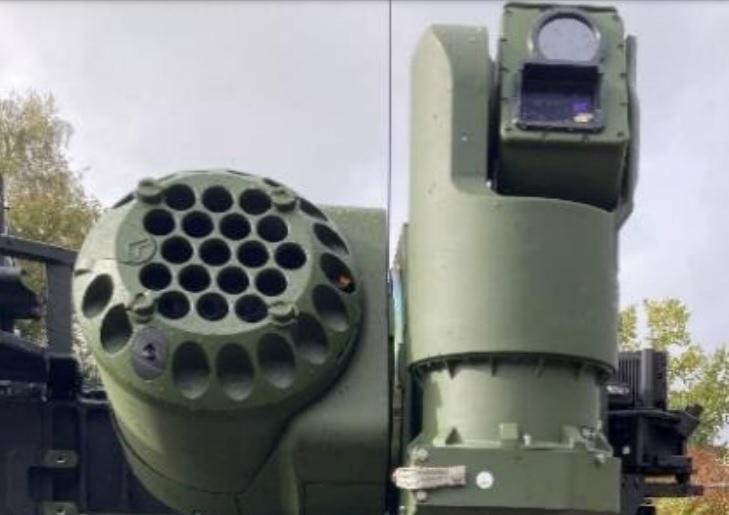In today’s hybrid mission scenarios, combat forces must be able to respond to various threats in a situation-adapted manner. With this in mind, Rheinmetall has developed the Turret Independent Secondary Weapon Assembly (TSWA; Turmunabhängige Sekundärwaffenanlage in German) for the Bundeswehr’s Puma infantry fighting vehicle. The TSWA provides the mechanized infantry with a modern effector for scalable close-range protection that can be operated under armour protection. This massively increases the IFV’s ability to dominate not only in operations in the urban environment and in stabilisation operations, but also across the entire operational spectrum. The TSWA will be presented to a larger international audience for the first time at Eurosatory 2022. A demonstrator will be on display at the stand of PSM GmbH, the manufacturer consortium of the Puma IFV.
The TSWA is a remotely controlled weapon station mounted at the rear of the Puma IFV. It consists of the components mount, launcher unit and target optics. Modern manufacturing processes such as additive manufacturing enable a light weight. The modular design facilitates maintenance, repair and spare parts supply. The TSWA is characterised by simple operation and high reliability. It can be operated independently of the other on-board weapons. The system is controlled via tablet computer by the soldiers in the rear fighting compartment. The targeting optics include a high-resolution video camera, a thermal imager and a laser range finder. The TSWA can fire highly effective lethal and non-lethal ammunition – currently up to 20 different types.

A maximum of 18 grenades – e.g. irritant or flashbang ammunition – are available as non-lethal effectors. They can be used 360° around the vehicle. Up to 18 additional 40mm grenades (low velocity or medium velocity ammunition) can be loaded into the outer rotating drum magazine as lethal effectors. With these, the crew can cover the area of 180° behind the vehicle. The TSWA is air burst capable. It can program appropriate air burst ammunition so
that it can engage targets behind cover. The cadence is up to three rounds per second. The weapon system is to be available for adaptation to the Puma infantry fighting vehicle after completion of the verification process in 2023.
The Puma is a German infantry fighting vehicle (IFV) designed to replace the aging Marder IFVs currently in service with the German Army. Mass production began on 6 July 2009. The companies responsible for this project are Krauss-Maffei Wegmann and Rheinmetall Landsysteme, who created a joint venture in the form of Projekt System Management GmbH (PSM). The Puma is one of the world’s best-protected IFVs, while still having a high power-to-weight ratio. The primary armament is a Rheinmetall 30 mm MK 30-2/ABM (Air Burst Munitions) autocannon, which has a rate of fire of 200 rounds per minute and an effective range of 3,000 m. the German Puma vehicles will be equipped with a turret-mounted EuroSpike Spike LR missile launcher, which carries two missiles. In addition to the usual smoke-grenade launchers with 8 shots, there is a 6-shot 76 mm launcher at the back of the vehicle for close-in defence.













